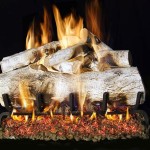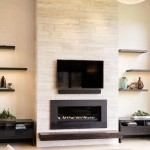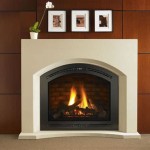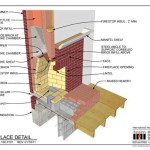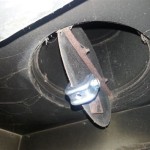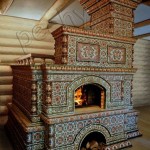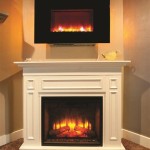Living Room Layout with Fireplace and TV: A Comprehensive Guide
The living room serves as a central gathering space in many homes, often accommodating both a fireplace and a television. Strategically arranging these elements, along with furniture and accessories, presents a design challenge that requires careful consideration of functionality, aesthetics, and viewing angles. Achieving a harmonious balance between these two focal points can significantly enhance the overall comfort and visual appeal of the room.
Successfully integrating a fireplace and a television into a living room layout requires a thorough understanding of spatial dynamics, furniture placement principles, and the impact of natural light. This article provides a comprehensive guide to designing such a space, covering various layout options, addressing potential challenges, and offering practical tips for creating a cohesive and inviting living room.
Addressing the Dual Focal Point Dilemma
One of the primary challenges in designing a living room with both a fireplace and a television is the presence of two competing focal points. Each element naturally draws the eye, potentially creating a sense of visual conflict if not handled thoughtfully. The key is to establish a clear hierarchy or find ways to integrate both elements harmoniously.
Several approaches can be taken to address this dilemma. One option is to designate one element as the primary focal point while subtly downplaying the other. This can be achieved through variations in size, placement, and surrounding decor. For example, a large, decorative fireplace might be considered the primary focal point, with a smaller, less prominent television positioned to the side. Alternatively, the television can be integrated into a custom entertainment center that also incorporates the fireplace, creating a unified visual statement.
Another approach is to create a balanced arrangement where both the fireplace and the television are visually equal. This can be accomplished by placing them on the same wall, either side-by-side or stacked vertically. In such arrangements, careful attention must be paid to the size and scale of each element to ensure a sense of proportionality. The surrounding decor, including artwork, shelves, and accessories, should also be carefully curated to maintain visual equilibrium.
Ultimately, the best approach will depend on the specific characteristics of the room, including its size, shape, and architectural style. Personal preferences and lifestyle considerations should also play a significant role in the decision-making process.
Exploring Various Layout Options
Numerous layout options can effectively integrate a fireplace and a television into a living room. The choice of layout will depend on the size and shape of the room, the location of windows and doorways, and the desired aesthetic. Understanding the pros and cons of each option is crucial for making an informed decision.
Symmetrical Layout: This classic layout places the fireplace and television on the same wall, typically flanking a central seating area. A symmetrical arrangement provides a balanced and visually pleasing aesthetic. However, it may not be suitable for all rooms, particularly those with limited space or asymmetrical architectural features. Furniture is typically arranged in pairs, mirroring each other across the central axis. This layout works well when the fireplace and television are of similar size and prominence.
Asymmetrical Layout: An asymmetrical layout offers a more relaxed and informal feel. The fireplace and television are placed on different walls, creating a dynamic and visually interesting space. This layout can be particularly effective in rooms with unique architectural features or irregular shapes. Furniture placement is less rigid, allowing for greater flexibility in creating distinct zones within the room.
Corner Fireplace Layout: In this layout, the fireplace is positioned in a corner of the room, freeing up wall space for the television and other furniture. This arrangement can be particularly effective in smaller living rooms where maximizing space is a priority. Furniture is typically arranged around the corner fireplace, creating a cozy and intimate seating area.
Above Fireplace Layout: Mounting the television above the fireplace is a common space-saving solution. However, this arrangement can present challenges related to viewing angle and heat exposure. It is crucial to ensure that the television is mounted at a comfortable viewing height and that adequate heat shielding is in place to protect the electronic components. This option often requires professional installation and may necessitate adjustments to the fireplace surround.
Floating Layout: This modern layout involves placing the furniture away from the walls, creating a sense of openness and airiness. The fireplace and television can be integrated into a custom entertainment center or positioned as freestanding elements within the space. A floating layout is particularly well-suited for larger living rooms where there is ample space to move around.
When considering layout options, it is essential to create a floor plan that accurately reflects the dimensions of the room and the placement of existing architectural features. This will help to visualize the space and ensure that the chosen layout is both functional and aesthetically pleasing.
Optimizing Viewing Angles and Minimizing Glare
Regardless of the chosen layout, optimizing viewing angles and minimizing glare are crucial for ensuring a comfortable and enjoyable viewing experience. Poor viewing angles can strain the neck and eyes, while glare can make it difficult to see the television screen. Addressing these issues requires careful consideration of television placement, furniture arrangement, and lighting control.
Viewing Angle: The ideal viewing angle is typically considered to be within 30 degrees of the center of the television screen. This means that the seating area should be positioned directly in front of the television or slightly to the side. Avoid placing seating at extreme angles, as this can distort the image and make it difficult to see. To determine the optimal viewing distance, a general rule of thumb is to multiply the diagonal screen size of the television by 1.5 to 2.5. For example, a 55-inch television should be viewed from a distance of approximately 7 to 11 feet.
Glare: Glare can be a significant problem in living rooms with large windows or reflective surfaces. To minimize glare, consider the placement of windows and the direction of sunlight. Window treatments such as blinds, shades, or curtains can be used to control the amount of light entering the room. Anti-glare screens or filters can also be applied to the television to reduce reflections. Avoid placing the television directly opposite a window, as this will create the most severe glare. Matte finishes on walls and furniture can also help to reduce reflections.
Lighting: The optimal lighting for television viewing is indirect and diffused. Avoid placing lamps or overhead lights directly behind the television, as this can create distracting reflections. Consider using dimmer switches to adjust the brightness of the lights in the room. Task lighting, such as floor lamps or table lamps, can be used to provide additional illumination for reading or other activities. Bias lighting, which involves placing a light source behind the television, can also help to reduce eye strain and improve the perceived contrast of the image.
Mounting Height: The mounting height of the television is also a critical factor in optimizing viewing angles. The center of the television screen should ideally be at eye level when seated. This may require adjusting the mounting height depending on the height of the seating area. When mounting a television above a fireplace, it is particularly important to ensure that the mounting height is not too high, as this can strain the neck and make it uncomfortable to watch television for extended periods of time.
By carefully considering viewing angles, glare, and lighting, it is possible to create a viewing environment that is both comfortable and visually appealing. These factors should be taken into account when planning the layout of the living room and selecting furniture and lighting fixtures.
Beyond the core layout and technical considerations, integrating the fireplace and television into a cohesive design scheme involves selecting appropriate materials, colors, and accessories. The style of the fireplace surround should complement the overall aesthetic of the room, and the television should be seamlessly integrated into the design. Cable management is also essential for maintaining a clean and uncluttered look. Hiding cables behind walls or using cable management systems can significantly improve the visual appeal of the space.
The placement of artwork, shelves, and other accessories can also play a significant role in creating a balanced and visually appealing living room. These elements should be carefully curated to complement both the fireplace and the television, creating a harmonious and inviting space.

Living Room Layouts With Fireplace Tvs Direct Fireplaces

20 Living Room Layout With Fireplace And Tv On Opposite Walls Livingroom Family Arrangements

16 Ideas For Living Room Layouts With A Fireplace Modsy Blog Narrow Decor Livingroom Layout

How To Position Your Fireplace Furniture Together

Layout A Living Room With Tv Fireplace Florida Leather Gallery

How To Arrange Living Room Furniture With A Tv And Fireplace
7 Inspirational Living Room Layout Ideas Heat Glo

How To Arrange Furniture With Two Focal Walls Emily Henderson

How To Arrange Living Room Furniture With A Fireplace And Tv Cow

7 Tips For Living Room Layouts With A Fireplace

